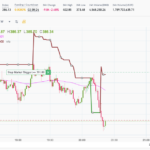Being an investor is something that aims by people who wants better financial status. Investment is the essential part of long term financial planning, especially if you plan to have stable and sustainable financial condition, either related to increasing wealth, preparing retirement and so on.
Generally, the most successful people in the world are also voracious readers. This is applicable for the most successful value investors. Warren Buffett, for example, he used to read 1,000 pages a day when he was starting out and Charlie Munger often advise young investors to “develop into lifelong self-learners through voracious reading”. Both credit their habit of reading as a major contributor to their success. While it is important to invest early, it is also important to invest wisely. These five classic investing books can provide indispensable business and finance insights for young investors.

dailyreckoning.com
Why Stocks Go Up and Down by William Pike
At the glimpse, this is a basics book on the fundamentals of equity and bond investing; financial statements, cash flows, etc. This book is a good place to start on, especially if you are new to investing or for the young investor. Despite this book aims at providing the basic understanding, a lot of people find it useful to understand and relearn about investing world. A lot of investment fundamentals are covered in depth that other books assume you know already. This book is a great tool for putting all the pieces together when it comes to analyzing a business or the market. Even if you are a little more experienced and knowledgeable, it serves a good purpose in bringing it all back to basics. Sometimes it is easy to forget how all the various pieces fit together and act in unison. This book is recommended for both novices and more knowledgeable practitioners.
The Essays of Warren Buffett: Lessons for Corporate America by Warren Buffett
Warren Buffett is widely considered to be modern history’s most successful investor and in this book, he provides his views on a variety of topics essential to corporate America and shareholders. The interface between a company’s management and its shareholders, as well as the thought processes involved in enhancing a company’s enterprise value can be found in this took. In addition to that, it also includes discussions on corporate governance, finance, investing, alternatives to common stock, mergers and acquisitions, accounting and valuation, accounting policy, and tax matters.
Buffett summarizes his basic business principles. Himself as the steward of Berkshire Hathaway Inc. (BRK-A), informs the shareholders of the company that their mutual interests are aligned. He has a philosophy of bringing in talented managers at portfolio companies and leaving them alone. He also advocates purchasing shares of businesses at times when these stocks are trading at a discount from their inherent value. Interestingly, he is against following investing trends.
The Intelligent Investor by Benjamin Graham
This book was written in 1949 and has been recommended by Warren Buffett as the greatest investing book ever written. To make this book even important, Benjamin Graham is considered the “father of value investing.” This paradigm advocates the purchase of stocks that appear underpriced relative to their inherent value, which is determined through fundamental analysis. In this book, the Graham delves into the history of the stock market and informs the reader on conducting fundamental analysis on a stock. He discusses various ways of managing portfolio including both a positive and defensive approach. In this book, he then compares the stocks of several companies to illustrate his points.
Beating the Street by Peter Lynch
Peter Lynch is one of the most successful stock market investors and hedge fund managers of the 20th century. He started out as an intern at Fidelity Investments in the mid-1960s. Nearly 11 years later, he was tasked to manage the Magellan Fund, which at the time had close to $18 million in assets. By 1990, the fund had grown to a whopping $18 billion in assets with nearly 1,000 stock positions. During this time, the fund boasted average returns of more than 29% per year. This book allows the reader to peek into Lynch’s mind and thought processes in terms of deciding whether to purchase or sell a stock. Lynch believes that an individual investor could exploit market opportunities better than Wall Street, and encourages investors to invest in what they know.






